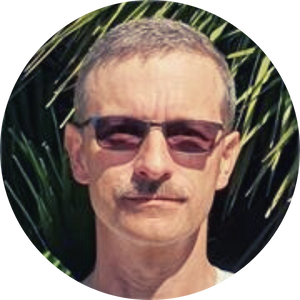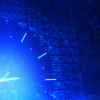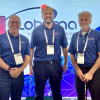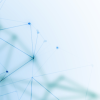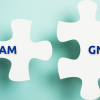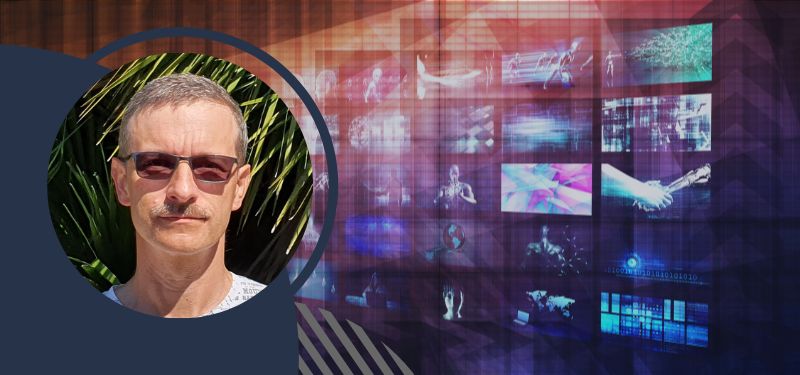
It’s been 10 years since we first received the Research & Development Center status. In 2012, the Minister of Economy granted us the status for the first time. Since then, we extend this title every year. Currently, it’s granted by the Ministry of Economic Development.
About Globema’s Research & Development Center
Our solutions support energy industry development as well as renewable energy production and management. We have our own R&D units and two software development centers. The R&D projects we complete are subsidized by the European Union (from the European Regional Development Fund) and by the Polish National Center for Research and Development. We team up with the leading technical universities and research facilities including the Technical University of Łódź, Warsaw University of Technology, University of Warsaw, and AGH University of Science and Technology.
There was no Big Bang ? Globema’s roots, especially of the management board, are intertwined with academia. This strongly influenced our decision to launch R&D operations. From the beginning, we maintained relations with universities and, as a commercial company, with other business institutions. All of this worked out for us. Also, our founders were members of several associations, such as the Polish Chamber of Information Technology and Telecommunications. This allowed us to form relationships with even more people and groups across various industries. It stimulated our growth in the R&D field, both in the business and scientific context. The collision of these three worlds created different ideas for R&D projects. Additionally, 2008-2009 was a favorable time to start R&D activities due to the new economic and political situation. At first, it wasn’t the case for commercial companies but with time, different laws and regulations made it easier to maintain systematic R&D operations. And so we launched our first project – District Heating Office (DHO). It was co-financed by the Polish Agency for Enterprise Development as part of the Innovative Economy program. This project allowed us to significantly improve our platform for developing applications for the district heating industry. Then we started the next projects and we keep the ball rolling ?
A key milestone in our R&D history was the establishment of our Software Development Center in Łódź. We began building it in 2011 and finished it within 2-3 years. This Center is dedicated to R&D and it has a subdivision called the Intelligent Network Software Development Lab.
We conduct many co-financed projects. They are ambitious, visionary projects and it’s impossible to predict their outcomes and whether we can succeed. They are subsidized so that we don’t have to take such a risk by ourselves. These projects are usually related to different fields of the economy, especially the energy industry.
We also have quite a bit of our own R&D investments. Some examples are GeoTask (a Field Service Management tool that automates fieldwork planning and facilitates its execution), telco network inventory management modules, and others. There is also the third category of our operations – commissioned research. Sometimes, clients come and ask us to conduct R&D work for them, just like TAURON Group did. We started this project already having experience and knowledge in the energy production forecasting but we focused on a problem that required more detailed research. Our task was to propose a method for predicting energy produced by prosumers while considering quite limited measurement options. This project turned out to be interesting for Globema and very useful for the client.
Many ideas emerge when we collaborate with people and groups across the business, academia, and economy. Moreover, our customers communicate their needs which also generates ideas for projects. Usually, these are small-scale, such as developing GeoTask and new route optimization methods that create the fastest, most efficient paths for vehicles.
Two projects come to my mind and both of them were co-financed. The first one is GlobIQ and it was related to a Network Digital Twin and building digital asset models for telecommunication and utility companies. It was a very interdisciplinary project that somewhat created a new department at our company that works on Artificial Intelligence and Machine Learning solutions. Still, GlobIQ remained in our usual business area which is the telecommunications and utility industry. Companies in this sector own and maintain assets scattered in the field. We support their processes related to these assets, e.g. telco networks. GlobIQ brought us several interesting solutions based on image and voice recognition for collecting data in the field. AI/ML technologies significantly improve processes related to field asset management.
For me, the second most interesting project was SORAL. We worked on this project with an energy operator, Energa, as well as the Gdańsk University of Technology. Together, we developed a solution for monitoring and maintaining the condition of energy networks in a non-invasive way that doesn’t require retrieving underground cables. Based on the technical measurements from the overground cable ends (e.g. at the energy stations), we can predict future problems and malfunctions. Energa Operator’s staff completed the research, while we took care of data processing and analysis and delivered software for condition-based network maintenance. To verify our methods, we compared data from retrieved underground cable fragments with data from overground ends of the same wires. We just finished this project and it awaits its commercialization.
Projects such as 4RES and PROGO relate to developing methods for forecasting energy production from renewable energy sources (RES) and therefore, they support environmental protection in an indirect way. These projects resulted in tools that facilitate investing in renewables development and utilization, foster energy transition, and help reduce the usage of fossil fuels. We make entrepreneurs want to invest in renewables because with accurate forecasts they can achieve better sales results in the energy market.
In our OPTYMALIZATOR project, we research methods for route and parking optimization. Calculating the shortest and most efficient routes results in reduced usage of gas and fossil fuels.
R&D is aligned with our business strategy. One of its elements is a continuous refinement of our platforms. An example of such a platform is SmartGrid used for building products like 4RES (forecasting energy production from RES), ElGrid (supporting the development and optimization of energy network operations), and a program providing hydraulic calculations for district heating companies. Another platform is GlobIQ which I mentioned earlier. It enabled us to create products such as LV Topology, a system for efficient collection of energy network data using image and voice recognition techniques, or LocDoc – an application powered by AI for automatic document digitization. We also have GeoPlatform for building map applications such as GeoGrid (data management on maps) and GeoGrid DH (GIS improving district heating network management).
At the moment we are working on two subsidized projects: OPTYMALIZATOR that I mentioned before and LOBSTER which continues our activities in the field of power engineering. For this project, we are searching for an efficient method and creating a tool for managing energy in Local Balancing Areas with dispersed renewable generation, energy storage, and e-mobility infrastructure. One of the challenges of the energy industry both in Poland and abroad is to implement the distributed energy paradigm in which both energy production and consumption are scattered around vast areas.
Moreover, as I mentioned before, we have numerous projects that are our own investments and we’ve been working on them continuously. Some examples include GeoTask,GeoPlatform, and telco modules.
Our telco modules, such as ONA (Optical Network Atlas), PRM (Physical Route Manager), and DCM (Data Center Manager) achieved the largest commercial success and we delivered them to customers from over 30 countries. GeoTask also keeps on gaining more users, especially in Poland and other countries where we are very active, like the Czech Republic. We are also an increasingly recognized brand in the area of RES energy forecasting.

